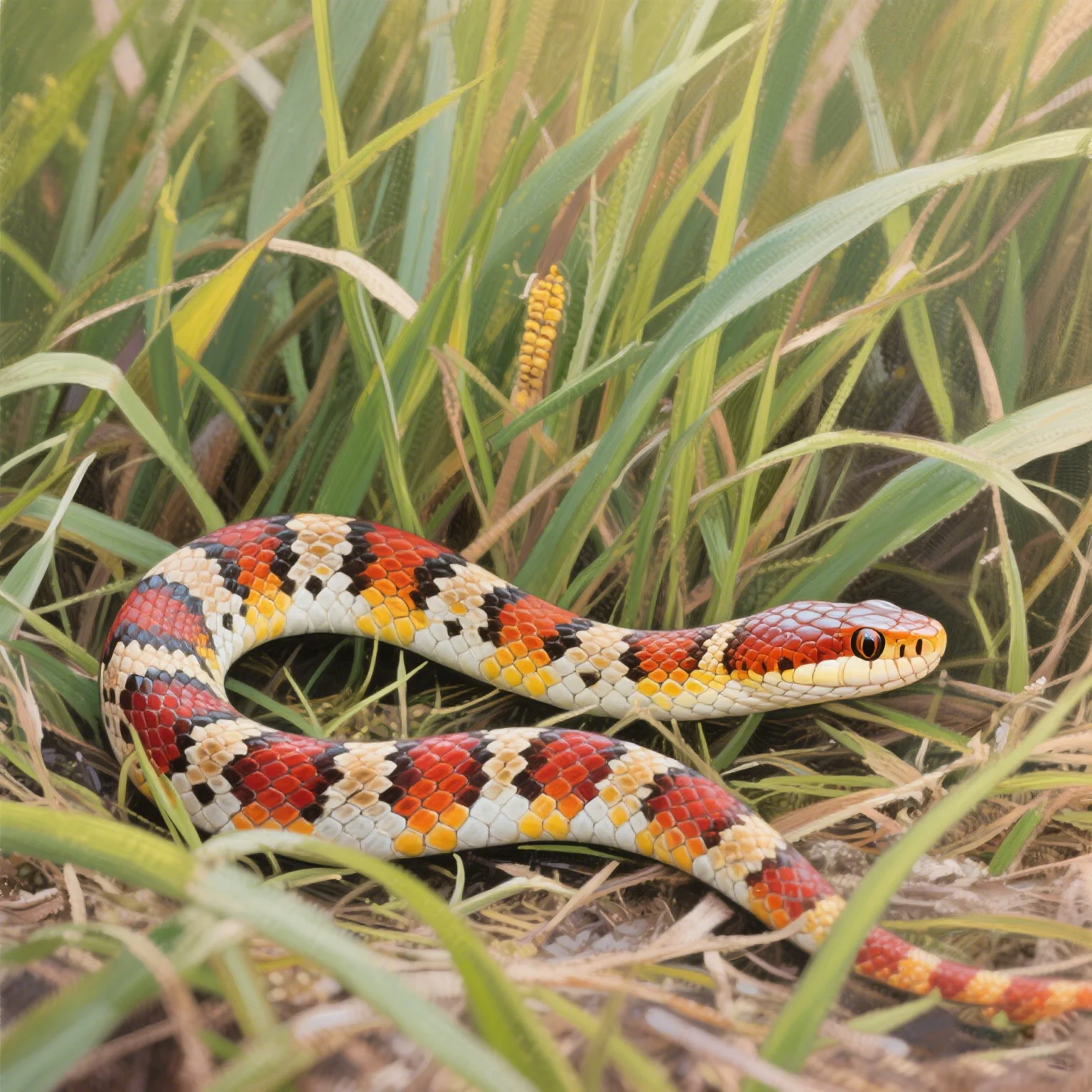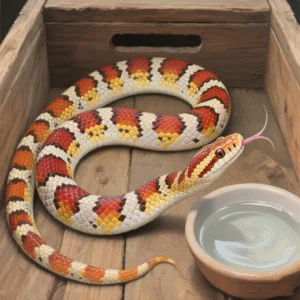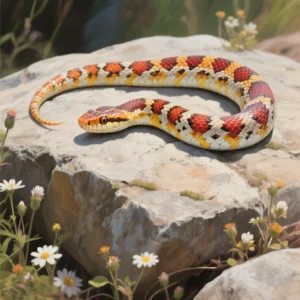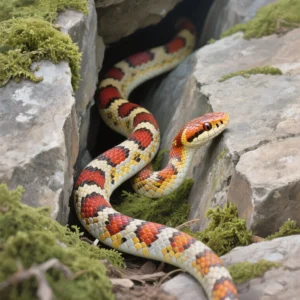
Reptile Husbandry
Corn Snake Breeding 101: Tips for Successful Reproduction
Welcome back to lopehare.com, your trusted source for specialized pet care! As editors passionate about exotic animals, we often receive questions from reptile enthusiasts looking to deepen their hobby, particularly into the rewarding realm of breeding. Corn snakes (Pantherophis guttatus) are one of the most popular pet snake species, known for their docile nature and incredible variety of morphs. For hobbyists ready to take the next step, understanding the intricacies of corn snake breeding can be both exciting and complex. This guide aims to provide comprehensive tips for successful reproduction, drawing on best practices to help you embark on this journey responsibly.
Introduction to Corn Snake Breeding
Breeding corn snakes isn’t as simple as putting two snakes together and hoping for the best. It requires careful planning, specific environmental controls, and a significant time commitment. However, compared to many other reptile species, corn snakes are relatively prolific and straightforward to breed, making them an excellent choice for those new to reptile propagation. Our goal at lopehare.com is to equip you with the knowledge to undertake this process successfully and ethically, ensuring the health and well-being of your animals.
Assessing Your Readiness
Before you even think about pairing snakes, you need to honestly evaluate your readiness and resources. Successful breeding isn’t just about producing offspring; it’s about ensuring you can provide optimal care for adults throughout the process and for the hatchlings afterward.
- Mature, Healthy Animals: Both prospective parents must be sexually mature, healthy, and free of parasites or diseases. Males typically reach maturity around 1.5 to 2 years old, while females require more time, often 2.5 to 3 years or older, and crucially, need to be of a suitable size and weight (ideally over 300 grams) to handle the strain of egg production.
- Space and Resources: Do you have adequate space for individual enclosures for the adults, a separate area for conditioning (brumation), an incubation setup, and numerous small enclosures for hatchlings? Breeding can yield 10-30 eggs per clutch.
- Time Commitment: The breeding cycle involves conditioning, monitoring pairing, managing gravid females, constant incubator checks, assisting hatching (if needed), and daily care for possibly dozens of hatchlings.
- Financial Capability: Breeding requires investment in extra enclosures, heating, lighting, thermometers/hygrometers, a quality incubator, incubation substrate, a significant amount of feeder insects for gravid females and hatchlings, and potentially vet visits if complications arise.
- Understanding Genetics: If you’re breeding for specific morphs, you’ll need a solid understanding of corn snake genetics.
- Plan for Offspring: Crucially, do you have a plan for what to do with the hatchlings? Can you house them long-term if necessary, or do you have ethical potential buyers lined up? Responsible breeders ensure their offspring go to good homes.
Conditioning & Brumation
Mimicking the natural seasonal cycle is vital for triggering reproduction in many temperate reptile species, including corn snakes. This period of reduced temperature, often referred to as brumation (the reptilian equivalent of hibernation), cues their bodies for breeding.
Preparation is Key: Snakes must be healthy, well-fed, and have empty digestive tracts before brumation. Stop feeding 10-14 days prior and provide fresh water daily during this fasting period to prevent food from rotting in their system at lower temperatures.
- Gradual Temperature Reduction: Over 2-4 weeks, slowly lower the temperature in their separate brumation enclosures. Aim for a stable temperature range between 50-60°F (10-16°C). Never allow temperatures to drop below freezing or exceed 65°F (18°C) for extended periods during brumation.
- Duration: Brumation typically lasts for 2-3 months. Provide a hide and fresh water throughout.
- Waking Up: Gradually raise temperatures back to normal housing levels over another 1-2 weeks. Once normal temperatures are reached, offer a smaller meal than usual to re-start their digestive system, then resume regular feeding on healthy, appropriately sized prey.
Pairing and Courtship Rituals
After both snakes have recovered from brumation and resumed regular feeding (usually 2-3 meals), they are ready for pairing.
- Introduction: Introduce the male into the female’s enclosure. The female’s territory can make her feel more secure.
- Observation: Observe their behavior. The male will typically become very active, flicking his tongue rapidly and following the female. Courtship involves the male twitching or vibrating his body against the female’s back. Successful mating can last for several hours.
- Timing: Leave them together for a few days, then separate them. You can reintroduce them a week or two later for another few days. Multiple successful pairings increase the chance of fertilization.
- Signs of Disinterest/Aggression: If the female shows clear signs of stress, attempts to escape, or becomes aggressive (biting the male), separate them immediately.
Recognizing Gravidity
If successful mating occurred, the female will become gravid (pregnant with eggs). This usually becomes apparent 3-6 weeks after the last mating.
- Visible Swelling: The most obvious sign is a noticeable swelling in her lower two-thirds, appearing lumpy as the eggs develop.
- Behavioral Changes: She may become more lethargic, spend more time hiding, or stop eating as the eggs take up space. A pre-lay shed will occur about 7-14 days before she lays her eggs.
- Palpation (Gentle): Experienced keepers can gently palpate the female’s abdomen to feel the developing eggs, but this should be done with extreme care to avoid injuring her or the eggs.
Preparing the Lay Box
A proper lay box is crucial for providing the female with a secure, humid place to deposit her eggs. Without it, she may retain the eggs (egg binding, a potentially fatal condition) or scatter them unsafely in the enclosure.
- Container: Use a plastic container large enough for the female to comfortably turn around in (e.g., a shoebox or larger, depending on her size). Cut a hole in the lid large enough for her to enter and exit easily.
- Substrate: Fill the box with a moisture-retentive substrate like sphagnum moss, vermiculite, or a mix. Moisten the substrate thoroughly but wring out excess water so it’s damp, not soaking wet.
- Placement: Place the lay box in her enclosure once she is visibly gravid or after her pre-lay shed.

Incubation for Success
Once the female lays her eggs (typically 40-60 days after the pre-lay shed), they need to be transferred to an incubator immediately.
- Incubator Setup: A reliable incubator capable of maintaining stable temperatures is essential. Use a substrate like vermiculite or perlite mixed with water in a sealed container (like a plastic shoebox) within the incubator. The substrate should be mixed at a 1:1 ratio by weight with water for most setups.
- Transferring Eggs: Carefully transfer the eggs to the incubation container. **Crucially, do not rotate or flip the eggs.** The developing embryo attaches to the shell early on, and flipping can kill it. Use a pencil to mark the top of each egg as you find it in the lay box. Place eggs with the marked side up on the incubation substrate, ensuring they are slightly buried but not covered.
- Temperature and Humidity: Corn snake eggs are typically incubated at temperatures between 78-82°F (25.5-27.8°C). Maintain high humidity (around 70-90%) within the incubation container by ensuring the substrate is moist and the container is sealed with only small air holes. Monitor temperature and humidity daily using reliable digital gauges.
- Duration: Incubation usually lasts between 55-70 days, depending primarily on temperature.
- Monitoring: Check the eggs periodically (without opening the incubator unnecessarily) for signs of mold (which can be wiped away gently with a dry tissue) or collapsing (signifying issues with humidity or fertility). Candling with a small flashlight can reveal vein development, indicating fertility.
Stable Conditions are Paramount: Fluctuating temperatures or humidity during incubation are primary causes of egg failure. Invest in a good quality incubator and monitoring equipment.
Hatching and Neonate Care
When eggs are close to hatching, they may “sweat” or dimple slightly. Hatching begins when the neonate uses its egg tooth to make a slit in the shell (“pipping”).
- Pipping: Do not rush the process. Hatchlings can spend 12-48 hours absorbing the remaining yolk sac before fully emerging.
- Assisting (Caution): Only assist a hatchling if it seems genuinely stuck after a prolonged period (e.g., 72+ hours in the egg or a visible issue like the umbilical cord being tangled). A small, clean slit can be made larger, but allow the snake to exit on its own.
- Post-Hatching: Move hatchlings to small, secure individual enclosures with a paper towel substrate, hide, and water dish. Maintain appropriate temperature gradients (75-85°F / 24-29°C).
- First Shed & Meal: Hatchlings will shed for the first time about a week after hatching. After the first shed, they are ready for their first meal, usually a live or appropriately warmed frozen-thawed pinkie mouse.
Troubleshooting Common Issues
Even with the best preparation, breeding can present challenges:
- Egg Binding (Dystocia): The female is unable to lay her eggs. This is a medical emergency requiring immediate veterinary attention. Causes include poor health, inadequate lay box, or improper conditioning.
- Infertile Eggs: Some or all eggs may not be fertile. They will typically mold or collapse quickly. This can be due to unsuccessful mating, poor conditioning, or unhealthy parents.
- Incubation Problems: Incorrect temperature or humidity can cause eggs to dry out, drown, or develop improperly.
- Hatchling Failure to Thrive: Some hatchlings may fail to shed or eat. Ensure proper temperatures and offer appropriately sized prey. Sometimes, assistance with the first meal is needed.
Conclusion: A Rewarding Journey
Breeding corn snakes is a significant undertaking requiring dedication, resources, and knowledge. By following a structured approach, ensuring the health of your adult snakes, providing precise environmental controls throughout the breeding cycle, and having a plan for the offspring, you can experience the incredible satisfaction of successfully reproducing these beautiful creatures. At lopehare.com, we are committed to supporting hobbyists in all aspects of specialized pet care, and we hope this guide provides a solid foundation for your corn snake breeding endeavors. Remember, responsible breeding contributes positively to the reptile community and the well-being of the animals we cherish.
References:
- Corn snake – Wikipedia
- Experienced reptile breeders and veterinary resources.




